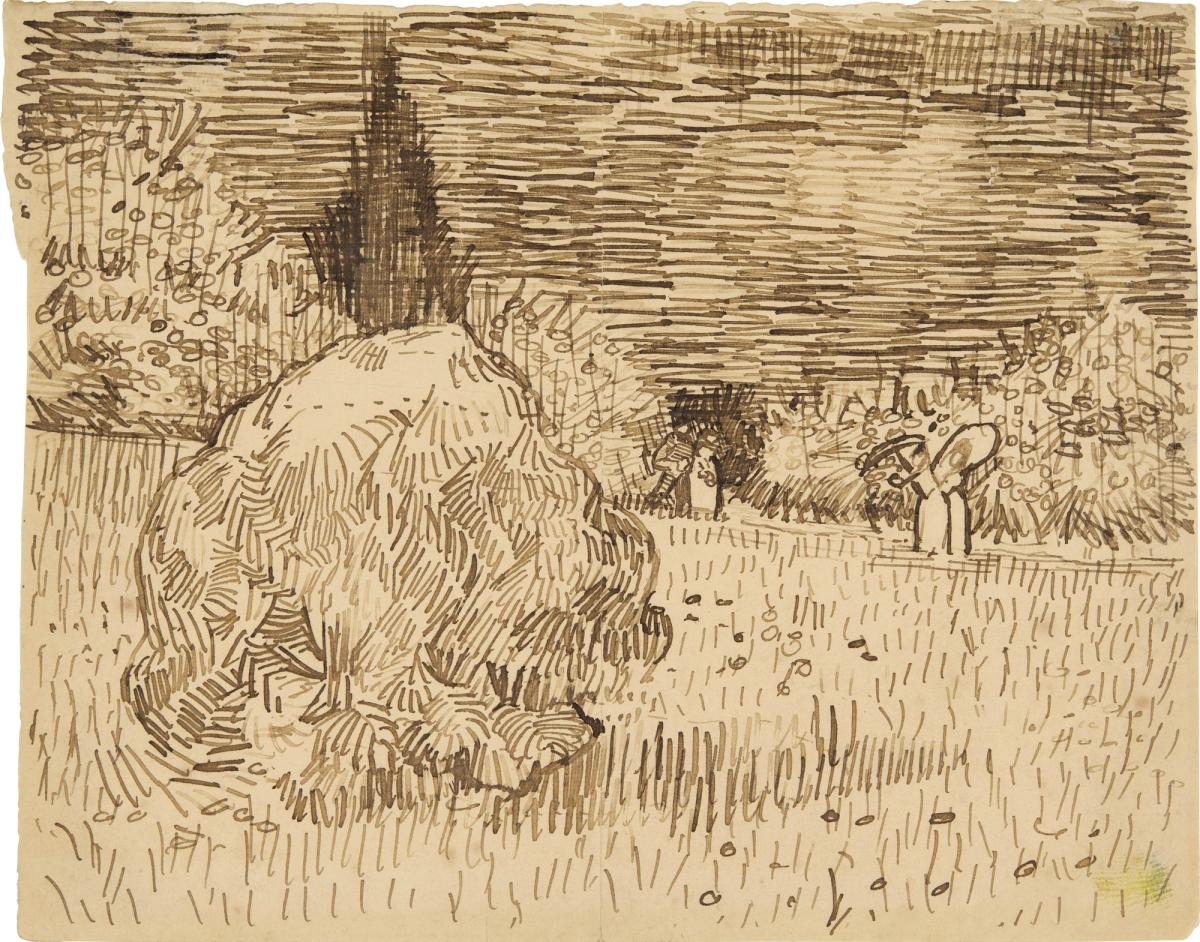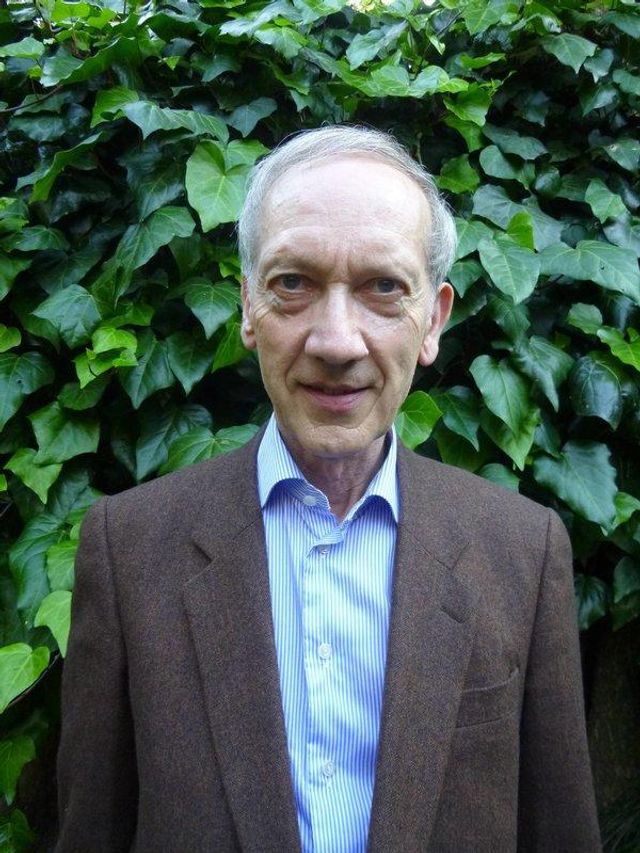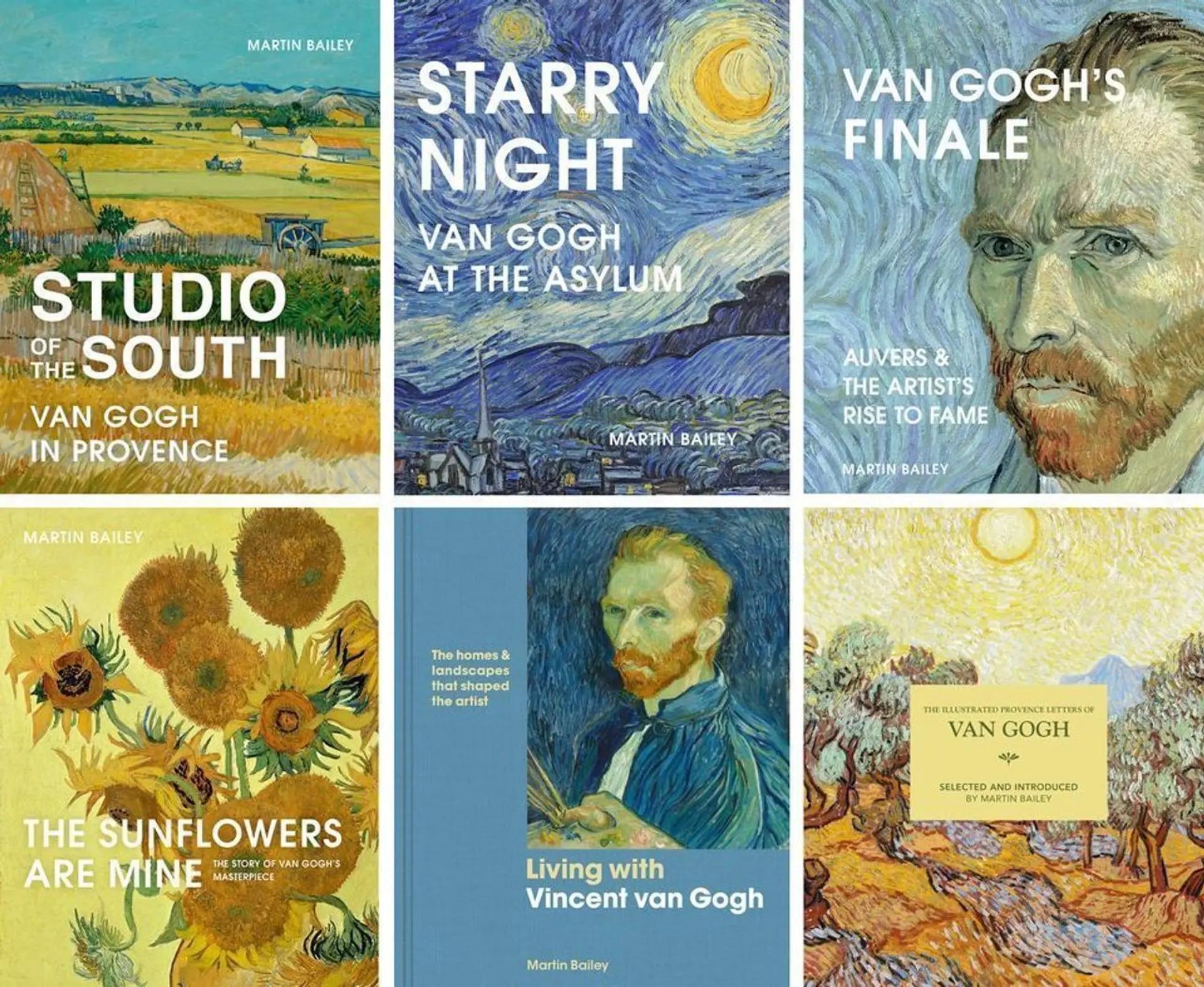Van Gogh’s drawing of the Public Garden in Arles will be auctioned by Sotheby’s in London on 4 March, with an estimate of £2m-£3m. The work depicts the garden in Place Lamartine, which lay between the artist’s Yellow House and the ancient ramparts of Arles. Van Gogh called it the “poet’s garden”, since he imagined Renaissance poets strolling through its greenery.
One of this work’s surprises is the existence of a fingerprint in the lower-right corner. The fingerprint is just cropped out of the photograph in the Sotheby’s catalogue, although it does appear in the image with the uneven edges which we have reproduced above, and in the detail below.
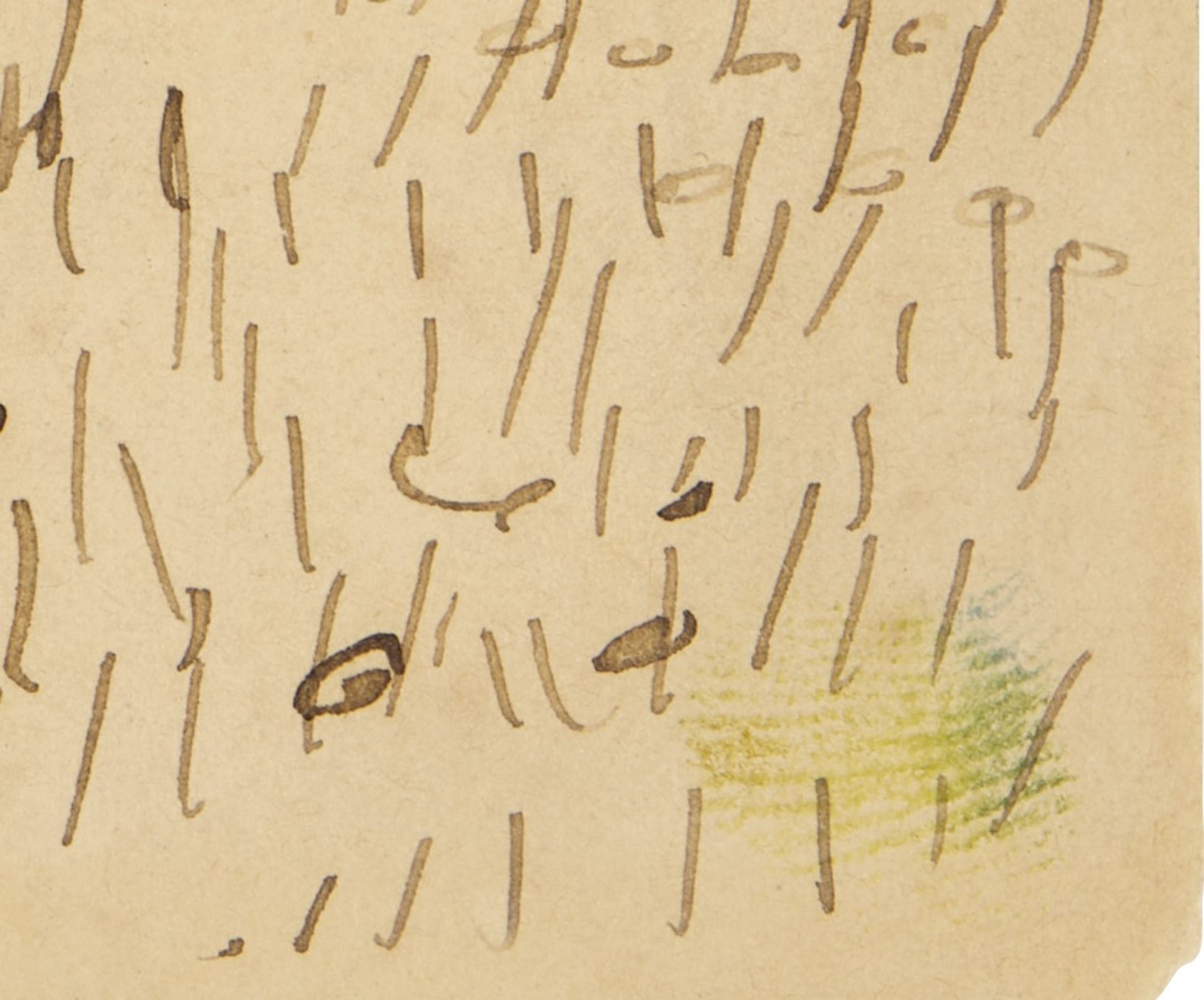
Greatly enlarged fingerprint on Van Gogh’s Public Garden in Arles
Sotheby’s
Sotheby’s specialists have confirmed that the mark was made with oil paint, ranging in colour from yellow via green to blue. This very probably came from Van Gogh’s fingers, although we cannot be certain. Most likely the drawing was in his studio in the Yellow House and he touched it while he had paint on his fingers.
More surprises came recently when Sotheby’s removed the drawing from its frame and found a pencil inscription on the reverse: “Pour Mercredi 19 Juillet” (For Wednesday 19 July). This probably refers to the fact it was lent in 1894, when 19 July fell on a Wednesday, by the artist’s sister-in-law Jo Bonger to the journal Mercure de France for reproduction. It was finally published in the September issue, making it one of the first Van Gogh works to be reproduced in a printed publication.
Vincent had posted the small sketch (14 x 17 cm) to his brother Theo on 26 September 1888, with an accompanying letter. He folded the drawing in half, to make it fit into the envelope. The fold line has been straightened by conservators, but can be clearly seen on the reverse.
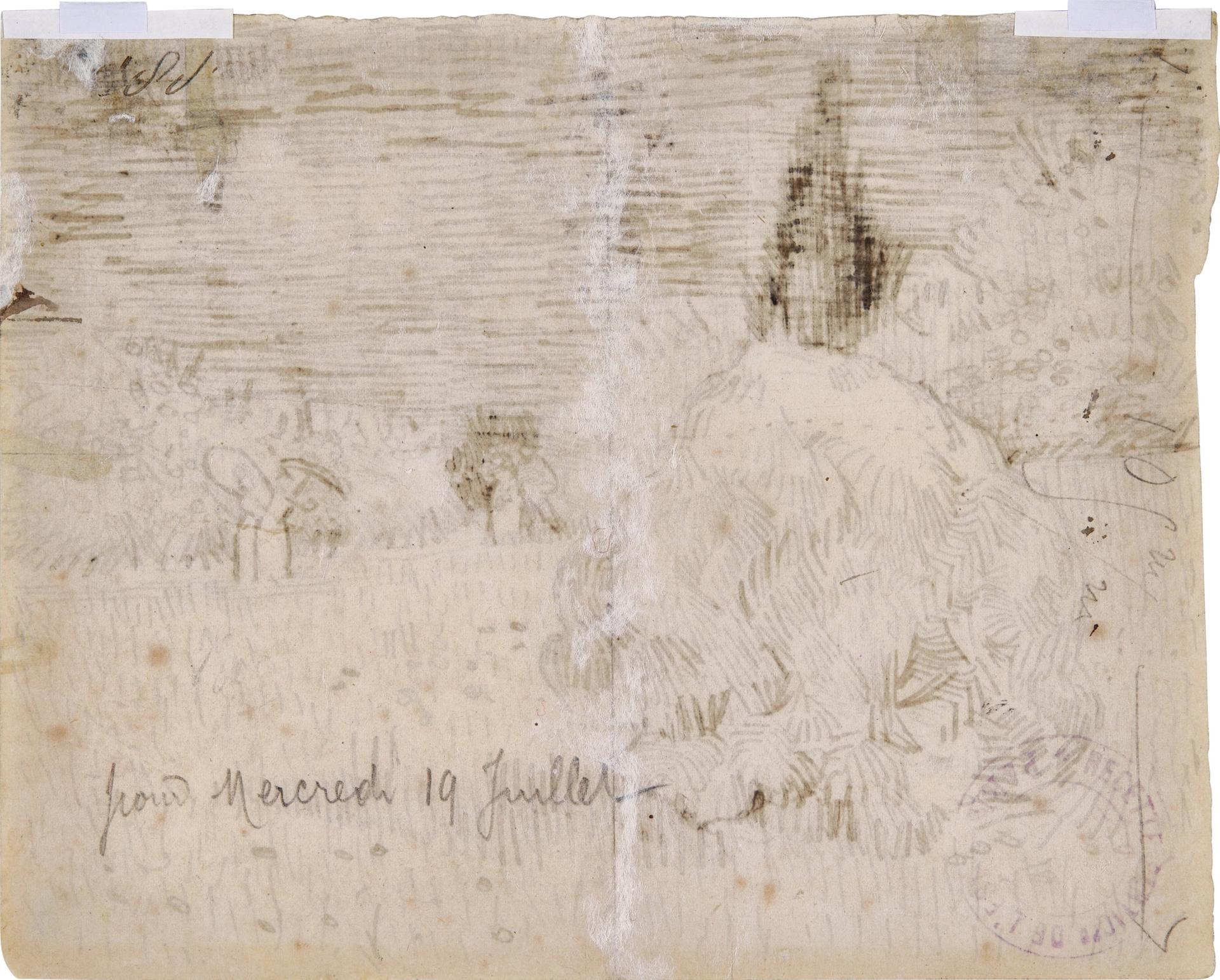
Reverse of Van Gogh’s Public Garden in Arles with the pencil inscription “Pour Mercredi 19 Juillet” and the vertical fold in the centre
Sotheby's
In his covering letter Vincent wrote that the drawing represented a painting he had just completed. It’s “the garden that’s right in front of my house”, he explained. Sadly the painting, created at a time when the artist was at the height of his powers, has been lost.
However the drawing soon to be auctioned at Sotheby’s remains as a record of the original Public Garden in Arles painting, as does another smaller and more schematic sketch made in a letter to Van Gogh’s friend, the Belgian artist Eugène Boch. We also have an unusually lengthy description of the lost painting given by Vincent to Theo, focussing on his colouration.

Van Gogh’s sketch of Public Garden in Arles in his letter to Eugène Boch, 2 October 1888
Van Gogh Museum, Amsterdam (Vincent van Gogh Foundation)
The artist wrote: “A round cedar or cypress bush—planted in grass… The bush is a variegated green, slightly tinged with bronze, the grass is very, very green, Veronese tinged with lemon, the sky is very, very blue. The line of bushes in the background are all raving mad oleanders…They’re covered in fresh blooms, and then in masses of faded blooms; their foliage also keeps on putting out strong new shoots, apparently inexhaustibly. A funereal cypress, completely black, stands above them and a number of small coloured figures are strolling along a pink path.”
Van Gogh also made a second painting of Place Lamartine depicting another view of the small park. He intended to hang both pictures in the spare bedroom of the Yellow House, framed in walnut. There they would have greeted Paul Gauguin, who arrived a month later. This second painting, now entitled The Poet’s Garden, survives and is at the Art Institute of Chicago.
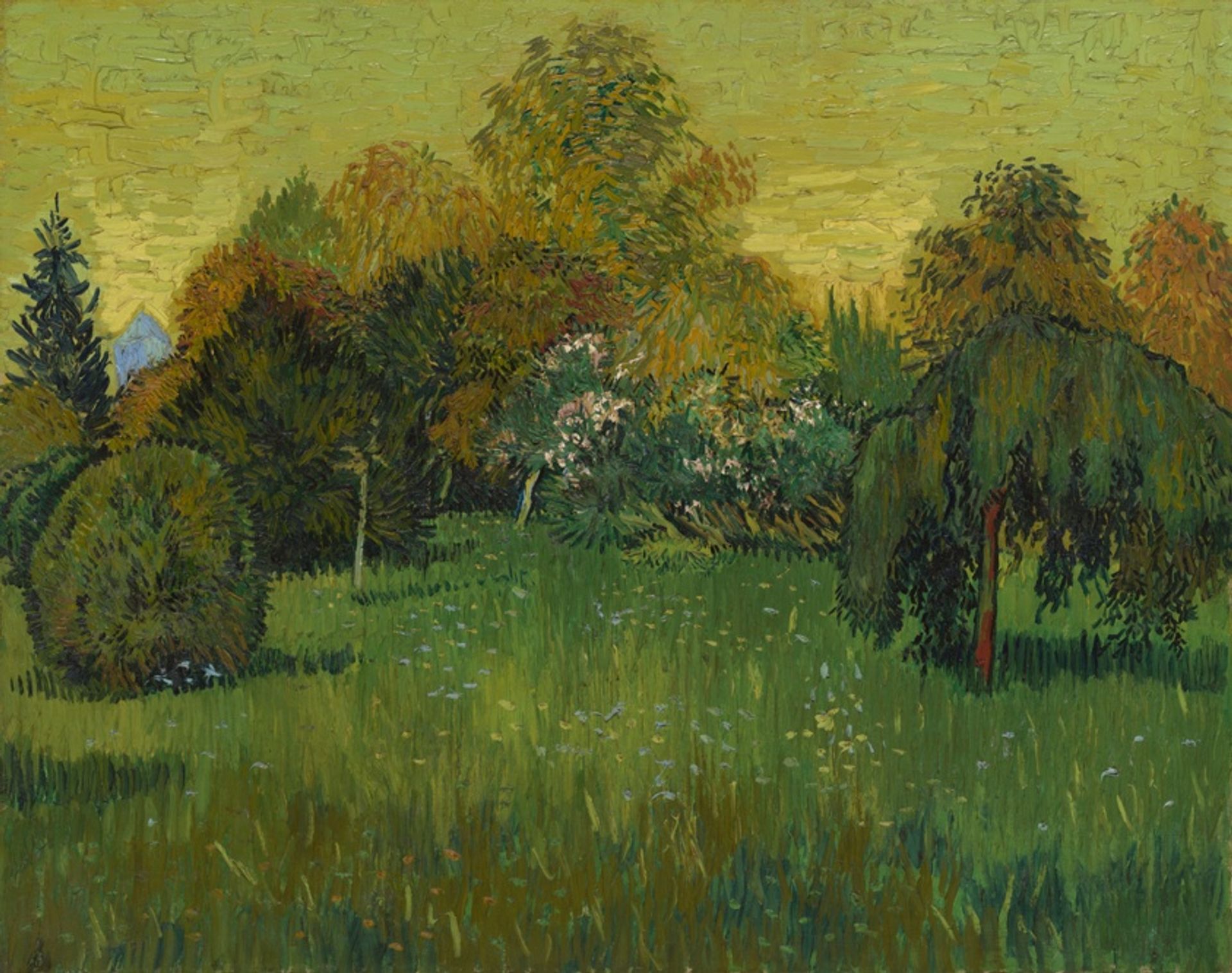
Van Gogh’s The Poet’s Garden (September 1888)
Art Institute of Chicago (Mr. and Mrs. Lewis Larned Coburn Memorial Collection)
But what happened to the original painting, Public Garden in Arles? Van Gogh’s letters reveal that he was pleased with the work, so it is very unlikely that he abandoned and discarded it. He only rarely gave away landscape paintings and he regarded Public Garden in Arles as a pair with The Poet’s Garden, so this makes it even more unlikely that he would have given it away.
Vincent sent the overwhelming majority of his Arles paintings to his brother in Paris. The most plausible scenario is that the painting Public Garden in Arles was sold (or given away) by his sister-in-law, Bonger. It might still survive, unrecognised as a Van Gogh, although this is sadly unlikely.
The Sotheby's drawing
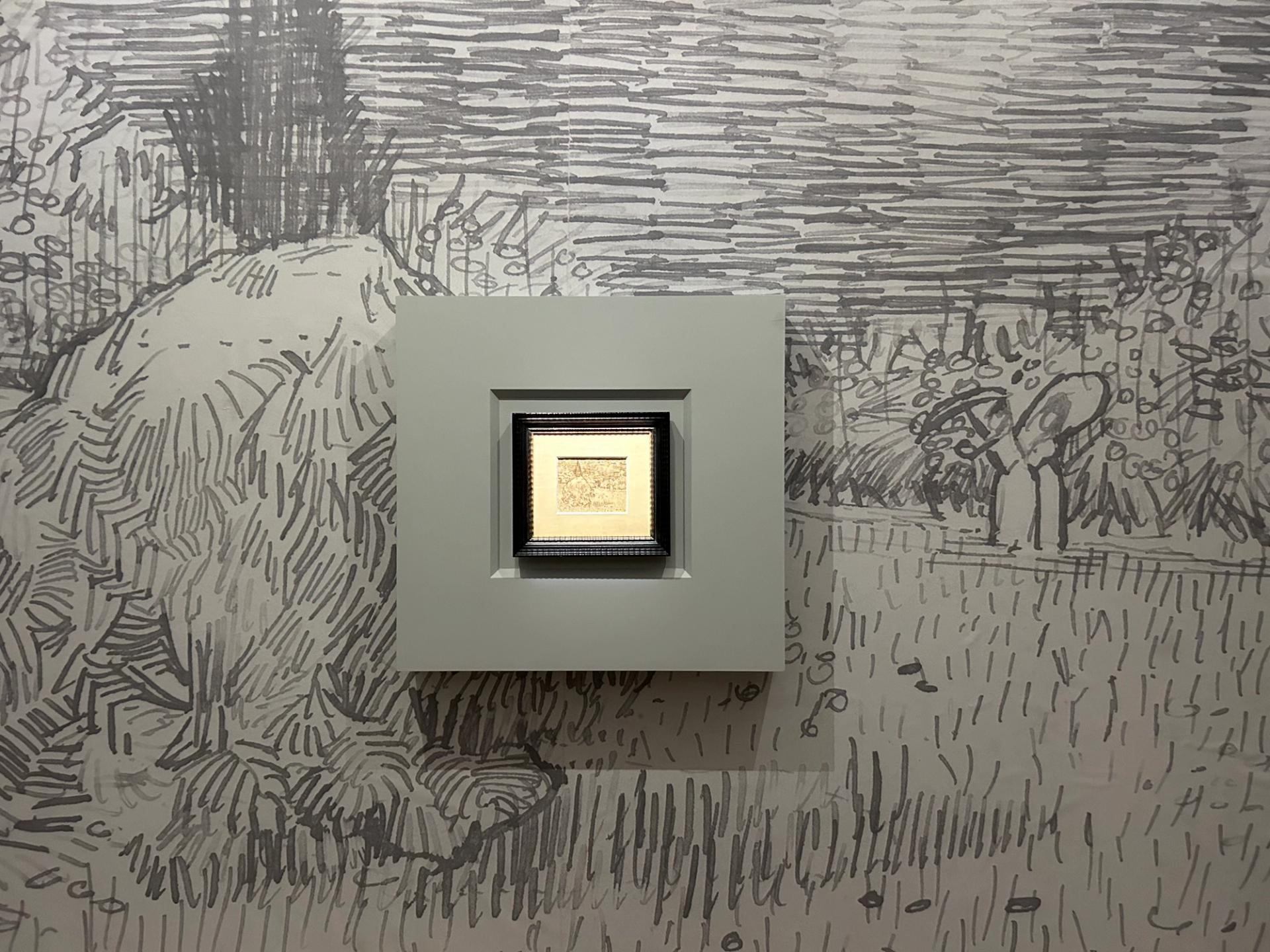
Van Gogh’s Public Garden in Arles at Sotheby’s, set against a hugely enlarged image on the wall
it) The Art Newspaper
And what happened to the drawing of Public Garden in Arles which is now coming up for sale at Sotheby’s? Theo saved it along with Vincent’s letters, but again it was most likely sold or given away by Bonger.
It was probably in the 1920s that the drawing was bought by Max Silberberg, a wealthy entrepreneur and distinguished collector in Breslau—then in Germany, but after the Second World War it became Polish and was renamed Wroclaw. Being Jewish, Silberberg was persecuted, and in 1935 the Van Gogh drawing along with many other of his artworks was auctioned off in a forced sale in Berlin.
Silberberg and his wife were seized in 1942 and sent to Auschwitz, where they perished. Their son Alfred and daughter-in-law Gerta had managed to flee to Britain just before the war.
At some point the drawing quite separately came to London, where it was bought by Thalia and Edward Gage, who were presumably unaware of what lay behind the 1935 sale. After they sold the work at Sotheby’s in 1958 it came up again there in 1997. This time it was bought by Alfred Taubman, the American businessman who then held a controlling shareholding in Sotheby’s.
Taubman died in 2015 and the Van Gogh drawing was put up for sale later that year, once more at Sotheby’s. It sold for $1,570,000.By this time the descendants of Silberberg had been seeking restitution of the work and a private arrangement was brokered in 2003 by Sotheby’s for the heirs to split the proceeds with the Taubmans. This means there are now no legal issues over ownership.
Silberberg also owned two other Van Goghs. His drawing The Olive Trees (June 1889) was auctioned in Berlin in 1935 and was bought by the Kupferstichkabinett (prints and drawings collection) of Berlin Museums. In 1999 it was restituted to Silberberg’s daughter-in-law Gerta, who lived in Leicester, England. She sold it later that year at Sotheby’s, where it fetched £5m.
The Olive Trees was bought by Ronald Lauder, an heir to the Estée Lauder cosmetics company, and it has been promised to the collection of New York’s Museum of Modern Art. It was displayed at London’s National Gallery in the exhibition Van Gogh: Poets & Lovers, which closed in January.
Silberberg’s other Van Gogh was an important Arles painting, The Bridge of Trinquetaille (October 1888). He sold it in 1932, just before the Nazis came to power, so there are no spoliation issues. The picture last appeared at Christie’s in 1987, selling for $20m—a huge sum at the time. The painting remains in a private collection.
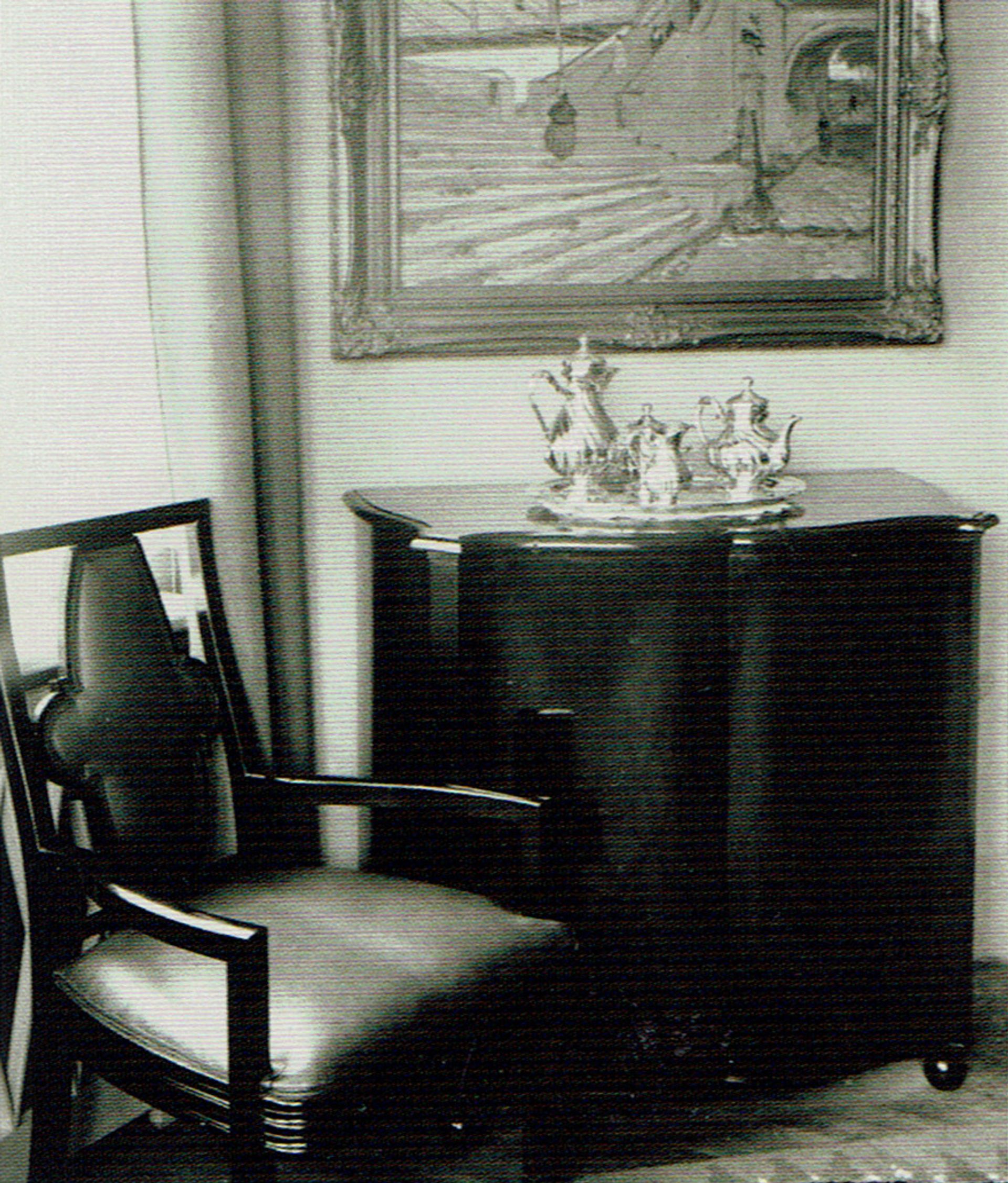
Van Gogh’s The Bridge of Trinquetaille in the dining room of Max Silberberg's home in Breslau (1920s)
Mystery seller
The sale on 4 March will mark the fourth time that Sotheby’s have sold the sketch of Public Garden in Arles since 1958. This time around, the auction house records the seller as “an eminent private collector”.
Although not named, there is a clue about the owner, since the drawing was lent to the Metropolitan Museum of Art’s exhibition in New York on Van Gogh’s Cypresses in 2023. On that occasion the wall label gave the name A. Aitzhanova. The owner remains unidentified, but the surname is reasonably common in Kazakhstan.
UPDATE: The drawing sold on 4 March for £2,236,000 (including fees).


